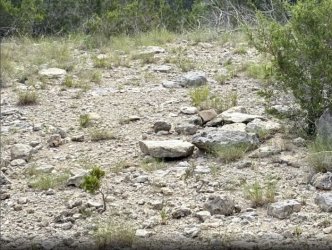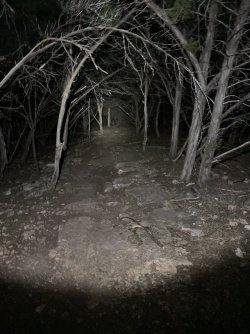I'm new, this is my first post here. I slowly moving towards some new hiking boots, to replace the cheap boots I have that don't fit and hurt my feet. I can spend up to about $150-$160. Most of my hiking is in south central Texas, in some large local state parks and natural areas, where I take long, all-day hikes over rocky terrain (see pic) and often in very hot, humid weather. I need a boot that breathes well (obviously) and can take a LOT of abrasion and that provides good ankle protection and support. FWIW, I'm 5' 11" and weigh 220 lbs.
I know the Danner Mountain 600 is good, but I've read that it's not good for sweaty conditions. Bass Pro Shop (15 minutes from me) has Keen Voyager Mids for $149. But I've read several reviews about them coming apart. Jeez, it seems like any boot you look at, some people wear them for years, and somebody else says "they fell apart in 10 minutes!"
Any tips would be appreciated, it's been a LONG LONG time since I bought some new hiking boots. Last time was some Vasque Hiker II's back in the middle 70s!

I know the Danner Mountain 600 is good, but I've read that it's not good for sweaty conditions. Bass Pro Shop (15 minutes from me) has Keen Voyager Mids for $149. But I've read several reviews about them coming apart. Jeez, it seems like any boot you look at, some people wear them for years, and somebody else says "they fell apart in 10 minutes!"
Any tips would be appreciated, it's been a LONG LONG time since I bought some new hiking boots. Last time was some Vasque Hiker II's back in the middle 70s!

Last edited:


